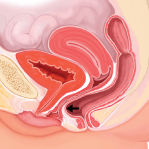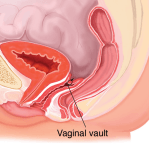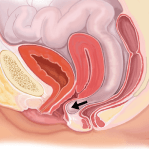What is Pelvic Organ Prolapse?
When a pelvic organ becomes displaced or slips down in the pelvis, it is referred to as a prolapse. You may have heard women refer to their “dropped bladder” or “fallen uterus.”
This problem afflicts over 3 million women in the United States.1
What causes pelvic organ prolapse?
Pelvic organ prolapse occurs when muscles and ligaments in the pelvic floor are stretched or become too weak to hold the organs in the correct position in the pelvis. Potential risks include pregnancy and childbirth, aging and menopause, obesity, pelvic tumors, chronic coughing, chronic constipation, heavy lifting, prior pelvic surgeries, some neurological conditions and certain genetic factors.2
What are some of the symptoms?
Symptoms of pelvic organ prolapse can include:
- Pressure or discomfort in the vaginal or pelvic area, often made worse with physical activities such as prolonged standing, jogging or bicycling.
- Diminished control in the bladder and/or the bowels.
- Painful intercourse. 3
What type of Pelvic Organ Prolapse do I have? 3
Your physician will be able to assess which type of pelvic organ prolapse you may have and review potential treatment options. We invite you to contact us to learn more. Consult with Dr. Balaloski and decide on a treatment plan that’s right for you. Take action to discover more about available treatment options.
Content is provided by Boston Scientific. Boston Scientific is dedicated to transforming lives
through innovative medical solutions that improve the health of patients around the world.
REFERENCES:
1. Wu JM, Hundley AF, Fulton RG, et al. Forecasting the prevalence of pelvic floor disorders in U.S. women: 2010 to 2050. Obstet Gynecol. 2009 Dec;114(6):1278-83.
2. Pelvic Organ Prolapse. Voices for PFD. www.voicesforpfd.org/pelvic-organ-prolapse. Accessed June 2021.
3. Pelvic Organ Prolapse: Symptoms and Types. Voices for PFD. www.voicesforpfd.org/pelvic-organ- prolapse/symptoms-types. Accessed June 2021.









